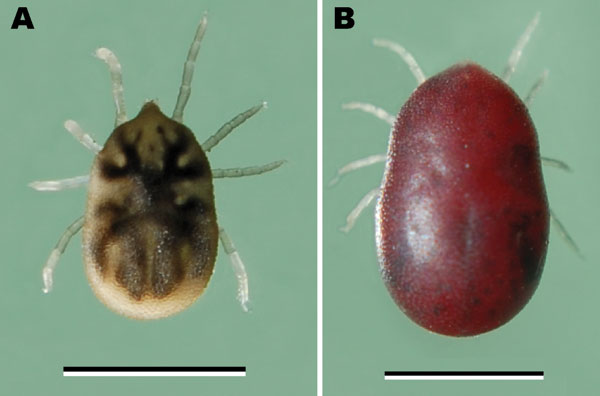Volume 15, Number 7—July 2009
Research
Tick-borne Relapsing Fever and Borrelia hermsii, Los Angeles County, California, USA
Figure 1

Figure 1. Ornithodoros hermsi nymphal tick from Mt. Wilson, California, USA. Panel A shows the nymph before its infective blood meal; panel B shows it after feeding. Scale bars = 2 mm.
Page created: November 10, 2010
Page updated: November 10, 2010
Page reviewed: November 10, 2010
The conclusions, findings, and opinions expressed by authors contributing to this journal do not necessarily reflect the official position of the U.S. Department of Health and Human Services, the Public Health Service, the Centers for Disease Control and Prevention, or the authors' affiliated institutions. Use of trade names is for identification only and does not imply endorsement by any of the groups named above.